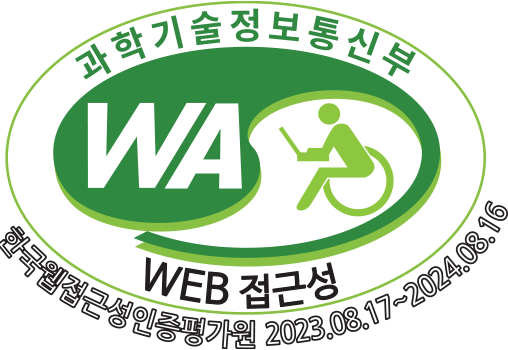Gyeonghuigung Palace
Gyeonghuigung Palace (Historic Site No. 271) was a secondary palace in the late Joseon dynasty. Its construction started in 1617 (9th year of Prince Gwanghae’s reign) and was completed in 1623 (15th year of Prince Gwanghae’s reign).
Before Gyeonghuigung Palace was constructed, there was a house owned by Prince Jeongwon, father of King Injo, and a story has been passed down that the house was confiscated and the palace was built as there was a rumor that the place emanated royal energy. While Gyeonghuigung’s original name was Gyeongdeokgung, it was renamed Gyeonghuigung in 1760 (36th year of King Yeongjo's reign) as it was pronounced similar to King Wonjong’s posthumous name "Gyeongdeok."
The Seoul Metropolitan Government excavated the Gyeonghuigung site since 1987, restored buildings including Sungjeongjeon Hall, and open them to citizens since 2002.
[Gyeonghuigung (Historic Site No. 271), 55, Saemunan-ro, Jongno-gu, Seoul]
Buildings in Gyeonghuigung Palace
Heunghwamun Gate
The main gate of Gyeonghuigung Palace designated as Seoul's Tangible Cultural Heritage No. 19. As part of the restoration project of Gyeonghuigung Palace in 1988, Heunghwamun Gate was moved to the site of Gyeonghuigung Palace, but its original location was already occupied by the Salvation Army Building, so it was restored in the current location.
Geumcheongyo Bridge
A stone bridge over the moat needed to cross after entering Heunghwamun Gate.
Sungjeongjeon Hall
A place within the palace where the king had morning meetings with his courtiers or hosted official events, including feasts or envoy receptions.
Jajeongjeon Hall
A place within the palace where the king had meetings with his courtiers, held events, or carried out official duties.
Taeryeongjeon Hall
A place within the palace used to store the portraits of King Yeongjo. Its use was not specified originally.
Seoam
A strange-looking boulder behind Taeryeongjeon Hall. Under the boulder lies what is called "Rock Fountain," which has been known as an attraction in Gyeonghuigung Palace for a long time.
Museum Hours
9 AM – 6 PM (closed on Mondays and on New Year’s Day)
Admission Fee
Free
Address
45, Saemunan-ro, Jongno-gu, Seoul
Contact
+82-2-724-0274~6
Transportation












